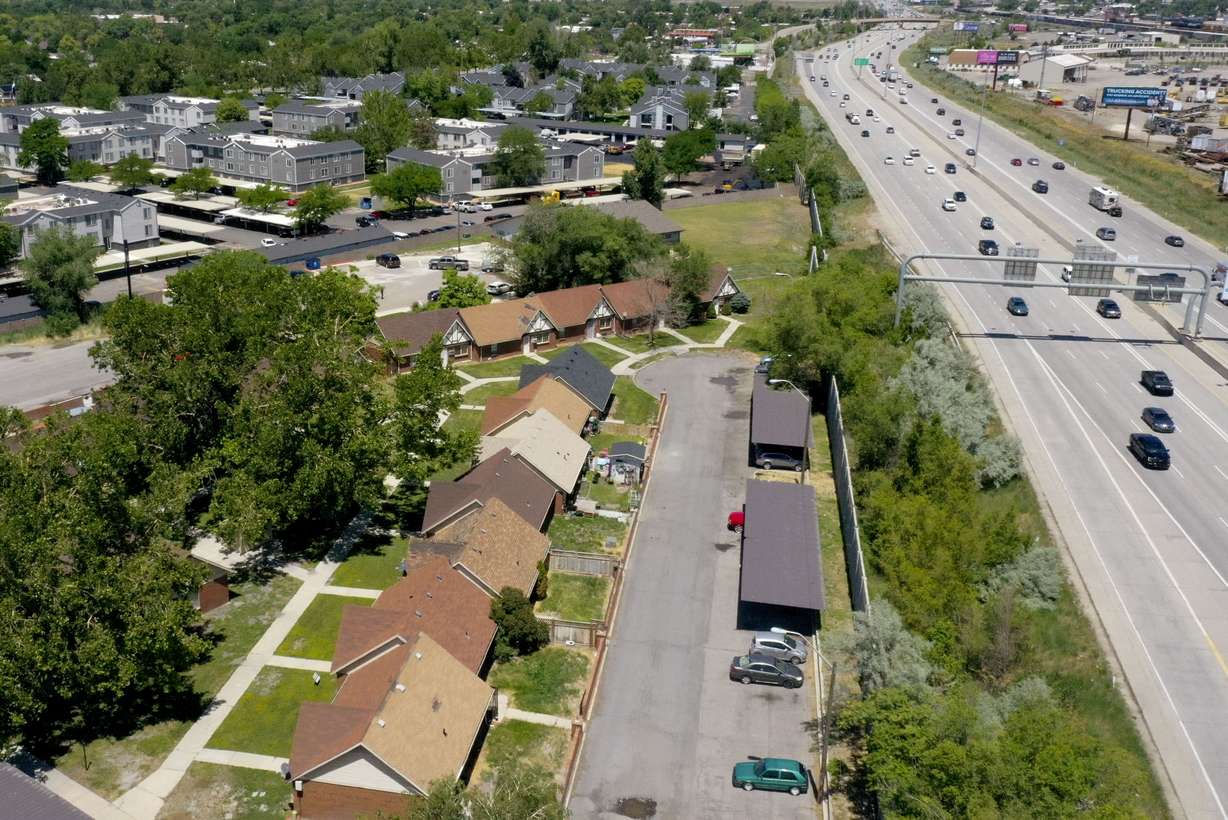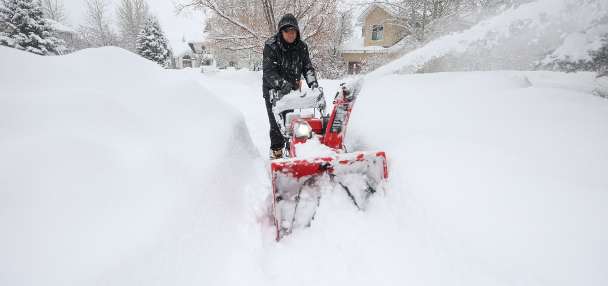Estimated read time: 5-6 minutes
This archived news story is available only for your personal, non-commercial use. Information in the story may be outdated or superseded by additional information. Reading or replaying the story in its archived form does not constitute a republication of the story.
SALT LAKE CITY — Utah transportation officials on Friday selected a "preferred alternative" for expanding I-15 from Salt Lake City to Farmington that features five general-purpose lanes and one high-occupancy toll lane in each direction, which they say will improve travel on the freeway now and in the future.
However, the plan is expected to force out at least three to five homes and 16 to 26 businesses, though there is also a potential to displace as many as 36 additional homes and 22 more businesses, according to a draft version of an environmental impact statement released Friday.
The massive report, released by the Utah Department of Transportation, shows what the agency recommends for the freeway from 400 South in Salt Lake City and Shepard Lane in Farmington. Tiffany Pocock, the environmental study project manager for UDOT, said the agency believes the alternative plan "meets the transportation needs of those using this corridor now and in the future."
She said the agency expects to release a final version of the plan along with a record of decision next year, while construction could begin as early as 2026.
UDOT's preferred plan
UDOT's preferred alternative would essentially expand the freeway by one or two additional lanes in each direction of the 17-mile stretch between Salt Lake City and Davis County, along with the express toll lane.
Improvements would also be made to the interchanges within the freeway stretch, while new shared-use paths would be added between North Salt Lake and Salt Lake City. There would also be new or enhanced multi-use paths and sidewalks included by existing freeway exchanges.
Pocock explained the state's projected growth is expected to increase travel times on I-15 considerably in the near future. Using a 2019 baseline, the document says travel times on the 17-mile stretch could jump from its range of 15.9 to 23.6 minutes now to a range of 20.6 to 88.9 minutes, during peak hours.
She said travel times are expected to drop back down to about 30 minutes by 2050 if the preferred alternative is installed.
When UDOT announced the project last year, officials noted that asphalt pavement in the selected area is about 50 years old and needs to be swapped out. Multiple bridges will also be replaced. The Utah Legislature appropriated $1.6 billion toward the project before an alternative was determined. The document published Friday says the estimated cost of the project is now $3.7 billion, though.
The project isn't expected to interfere with other plans to expand alternative transportation between Salt Lake and Davis counties. The Utah Transit Authority is working to double-track sections of its FrontRunner line that will bring 15-minute service at peak times possibly by 2029. It's also looking at a bus rapid transit system between Salt Lake City and southern Davis County.
Given the growth expected along the Wasatch Front over the next few decades, UDOT officials contend all three projects — and active transportation — are needed to meet the projected travel demands.
"All of those assets need to be successful in order to keep Utah moving," Pocock said.
Likely and potential impacts
However, Friday's report confirms many of the fears tied to the I-15 project. UDOT clarified to KSL.com that all of the three to five homes that would be impacted are in Davis County, while 35 to 36 additional homes could be impacted between Salt Lake and Davis counties depending on exact variables when the final plan is compiled and construction begins.
Pocock said 24 of the possible impacted homes are directly east of I-15 from 400 South to 600 North in Salt Lake City. The remaining homes are along sections of the freeway in Davis County.

The expansion would also relocate 13 to 16 commercial buildings along the 17-mile stretch, which would impact about 16 to 26 businesses because commercial buildings may have multiple businesses. Another 11 to 22 businesses may also be impacted, also because of the variation possible in construction.
"The preferred alternative is the narrowest section that meets the needs of the corridor. The first thing we want to do is avoid and then we would mitigate," she said.
Salt Lake City's west side residents have been critical of the plan, especially since that section was essentially cut off from the rest of the city by the creation of I-15 and I-80 decades ago. All three candidates for Salt Lake City's upcoming mayoral election said they opposed the plan during a forum earlier this week, prior to the draft statement.
It's unclear yet if the project will spark any sort of legal challenge. Salt Lake City Mayor Erin Mendenhall sent KSL.com a statement Friday, saying that she does still "fundamentally disagree" with expanding the freeway, but she is also "grateful" that UDOT listened to the city and found ways that can potentially spare homes from being demolished.
"We'll continue to stay at the table, listen to and amplify our community voices and fight for those needs," her statement read, in part. "As a city focused on forward-looking solutions that elevate our neighborhoods and our environment, we still believe greater investment in public transit is a far better path."
Meanwhile, UDOT's report says all property owners will receive "fair compensation" for their land, and residents and business owners will be given "relocation benefits" should their homes or businesses be relocated. The cost of this is yet to be determined.
Seeking more input
The process isn't final, though. UDOT launched a 45-day public comment period for the draft impactive statement on Friday. This includes three open houses about the preferred plan and its potential impacts, where residents can ask questions and provide feedback. Those will be held:
- Oct. 16: Online open house from 5 p.m. to 7 p.m. Details on how to participate will be posted online in advance.
- Oct. 17: In-person open house from 5 p.m. to 7 p.m. at the Bonneville Building inside the Utah State Fairpark (155 N. 1000 West in Salt Lake City)
- Oct. 18: In-person open house from 5 p.m. to 7 p.m. at the South Davis Recreation Center (550 N. 200 West in Bountiful)
People can also provide comments online from now until Nov. 13. Comments can also be emailed to i15eis@utah.gov or by mail to 392 E. Winchester Street Ste. 300, Salt Lake City, UT, 84107.
"We will analyze those and refine the preferred (alternative) based on comments," Pocock said. "And then we are anticipating we will release the final (statement) and record decision in the spring of '24."










